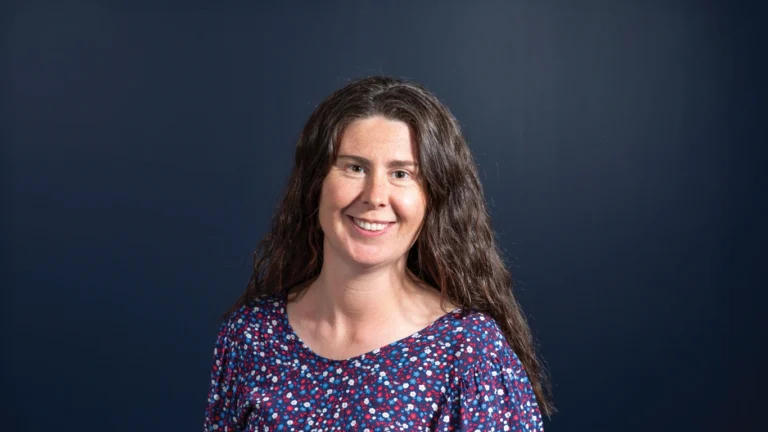
Probably because I didn’t know any better at the time, and unlike the majority of my graduating law school class, I started my legal career in-house. Due to the circumstances of my first real legal job at a fintech dotcom in London, and despite being underqualified for the title, I became GC within weeks of starting out. Since then, I’ve only spent a total of one year working in a law firm. It’s fair to say I’ve spent considerably more time in-house.
Twenty-five years ago, in-house lawyers didn’t receive the respect of the legal profession that they do today. Going in-house meant a lawyer was ‘downshifting’, seeking a less stressful environment and undertaking less intellectually demanding work.
It sounds ridiculous now. Working as an in-house lawyer back then was as much about becoming an engaged business partner to the business as it is today. And as we all know, far from being an easy ride, this actually results in a far more intense work experience. There’s a dramatic shift that happens when you move out of law firms into this world – where once there was a clear separation between yourself and your clients, now they’re right there in the room with you.
The technology back then seems as archaic now as that old- fashioned thinking. Email, photocopier, and a fax machine; a Blackberry was a major upgrade. I still recall the sign I placed above the fax machine at QVC UK instructing staff not to fax contracts without first having them reviewed by the legal department (me).
“My job was to spot risk and call in the experts. Is it a trademark issue? Call a trademark lawyer. Is it an employment issue? Loop in an employment lawyer. Everything went through outside counsel.”
In those days, the in-house profession was relatively early in its evolution. I was QVC UK’s first in-house lawyer and GC, a role I’d liken to that of air traffic controller. My job was to spot risk, and then mitigate it by calling in the experts. Is it a trademark issue? Call a trademark lawyer. Is it an employment issue? Loop in an employment lawyer. That we needed to consult a law firm before acting on these matters was never in question – and I did so in the most effective way I could.
That model of operating seems archaic now, too. I was doing my best to act as an integrated partner to the business, but I had no influence on its wider strategy. I had no blueprint for what great in-house leadership looked like, and I lacked the tools necessary to drive operational effectiveness – or to even really know what that meant.
My heavy reliance on external counsel changed in 2009 when I went to London to work for Amazon as a contractor. I was working on a project, and I asked which law firm I should call for advice. “Use Google,” I was told. I know what you’re thinking – but this was a pivotal moment in my career. Suddenly free from dependence on external advisors, my confidence took a leap when I discovered that I could guide the business on the basis of my own research. My development was accelerated even further by Amazon’s ‘“clear desk’ policy, which forced me to go digital at a time when many lawyers were still operating on paper.
This shift into technology was a breakthrough. But I can now see that, despite this evolution, I was still operating ‘manually’ in a lot of ways, using tools that were not fit-for- purpose. In my next role at eBay in Silicon Valley, I spent my early years building a legal function primarily using email and word processing software, powering my way through NDAs, SoWs, and MSAs.
These primitive tools left me with no quantitative information to show how much work we had done – nor whether it was impactful or aligned with the business’s objectives. Instead, most information was qualitative, inaccurate, and obtained well after the fact; it didn’t reflect what was going on in the business. Which wasn’t a good look in a tech business replete with strategists, analysts, and data scientists.
After a couple of years, I was promoted to Head of Legal for the eBay Classifieds Group and eventually became a member of the business’s leadership team. I was determined that I would run my legal function as best in class in the manner of my business and functional peers.
I’d done a lot of research on benchmarking – what does it mean to be a great legal function? – but there was a distinct lack of data to measure against. For example, I couldn’t see how many contracts we’d executed, or their value. It wasn’t clear how much of our budget had been spent internally versus on outside counsel. I needed to interrogate HR, Finance, and Operations teams to source the data.
This was an unwieldy process, and it spurred me into action. Using spreadsheets and PowerPoint, I began building a recurring reporting system, creating graphsand charts that I could present to the business’s leadership.
Of course, things evolved quickly from there. When eBay North America Legal first rolled out a contract management system (CMS), my team and I leveraged it to build a centralized commercial contract function for our international business. It was a significant undertaking that involved data collation across 17 countries – with considerable change management efforts required to navigate the different languages, jurisdictions and legal practice cultures involved.
The implementation process gave us real-time visibility into our workload, internal customers, and other valuable metrics. Most importantly, it gave us the opportunity to set a baseline and make continuous, scalable, and sustainable improvements to our operational effectiveness. Not only were we able to have a significant impact on business velocity – we were able to communicate that impact in the language of the business.
“The implementation of fit-for-purpose technology is crucial to the evolution of in-house legal practice.”
The next step was to combine the information from our contract management system (including data on our workflow automation) with our manually collected data from legacy point solutions (such as the e-billing tools used by HR and Finance). I then manually analyzed and visualized that data. Again, all of this allowed me to communicate the impact of our function to the business without resorting to legalese that they would not find valuable.
The implementation of fit-for-purpose technology is crucial to the evolution of in-house legal practice – we cannot meet our business partners’ expectations without it. No longer do we simply act as air traffic controllers for external counsel. Our organizations now expect us to serve as a competitive advantage in our own right, acting as business people with legal skills who drive business velocity.
In order to do this job well, we need the tools that our peers utilize. No other functional leaders – not heads of Finance, HR, Marketing, or Sales – still rely on the kinds of archaic workplace productivity tools (email, spreadsheets, and PowerPoint) that legal leaders do. From a technology perspective, in-house legal is often five to ten years behind HR, which can be up to ten years behind Finance, who along with Sales were the first to get fit-for-purpose SaaS technology to run their functions.
While our ways of working underwent huge changes during my decade at eBay, we still had plenty of room left to evolve when it came to technology. I used the tools that were available successfully enough: manual processes, a contract management system, a legacy e-billing tool, and a lot of assistance from a great legal ops team. My strategy was to gather as much information as I could manually, using it to create something that was credible at the leadership table.
The legal operations team used to ask me at least once a year what I wanted from a management and operations perspective – my pie in the sky dream. I’d say, “I want to run my function like a business unit. I want a real-time comprehensive dashboard so I can run my legal function the way my peers in HR, Finance, Sales and Marketing do.” Suffice to say that this was considered impossible at the time.
In a relatively short time, though, things have evolved dramatically. Legal is the last business function to be the beneficiary of fit-for-purpose technology; we are the last function to be ‘“SaaSified’. But our time has finally come.
“Best-practice legal leadershipis now all about creating a scalable engine room – for both the legal function and the business.”
Lawyers are trained to be reactive and detail orientated, and we are renowned for our work ethic. Whatever comes at us – be it down the phone or by email – we deal with it, and then move onto the next thing. This system works well under a law firm hourly billing model, but it doesn’t translate well in-house. What’s important in our world is the impact we are having on the business, not how hard (or how late) we’re working.
Having comprehensive, intuitive, fit-for-purpose technology gives us transparency, efficiency, and opportunities for automation. This, in turn, lets us shift from a reactive to a proactive stance – one which provides the bandwidth to focus on strategic alignment with the business.
For too long, we have been branded a ‘cost center’ whose only solution to rising workloads is to throw more lawyers at the problem. That approach, as we know, tends to result in diminishing returns, and it’s simply not the way that we work anymore.
As well as embracing technology, best-practice legal leadership now involves multi-disciplinary teams of operations and data science professionals cooperating to create a scalable engine room for both the legal function and the business. This diversification creates the opportunity for more satisfying careers for us all, and it’s an exciting new phase for our profession.
I’m excited to be helping drive this evolution at LawVu. I have worked with numerous customers as they evolve their functions by implementing LawVu’s cutting edge, fit-for- purpose SaaS platform, allowing them to quickly redefine their roles in-house into innovators and business accelerators.
To find out more about LawVu’s legal workspace, click here.


